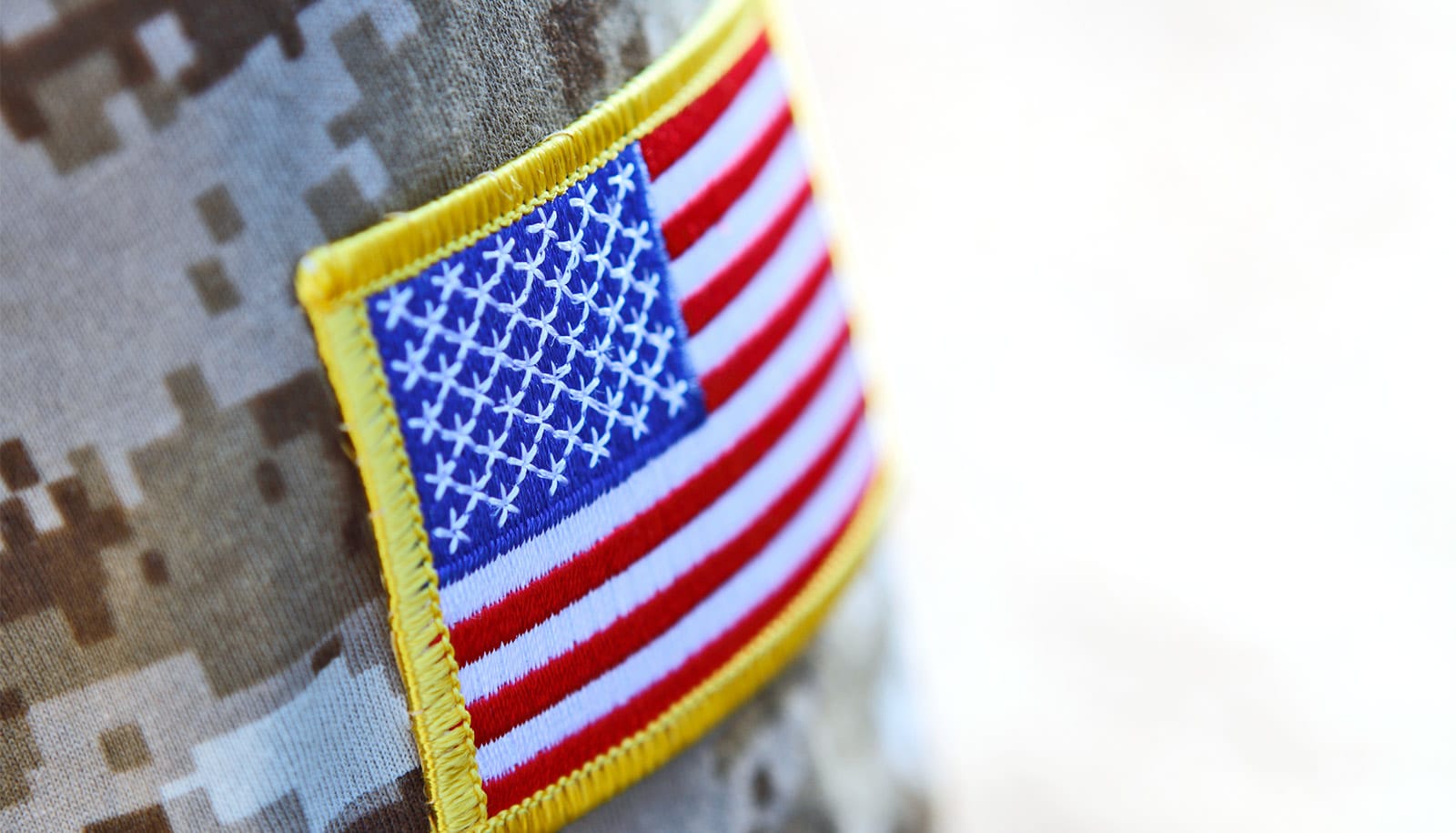The Post-9/11 G.I. Bill, which covers educational costs for veterans beyond tuition, increased college enrollment rates among veterans by 3 percentage points, new research suggests.
The increase in enrollment was much larger immediately after the bill’s adoption, however, and has waned in recent years.
“The original G.I. Bill not only significantly improved the human capital in the United States after World War II, but also democratized American higher education…”
The study, which appears in the journal Educational Evaluation and Policy Analysis, comes days after Congress passed a major expansion to the G.I. Bill, which—if signed into law—will provide additional educational benefits to veterans.
The Servicemen’s Readjustment Act of 1944, commonly known as the G.I. Bill, helped pay for college and other training for millions of World War II veterans. Since its inception, the G.I. Bill has been updated to continue providing educational benefits, with the most recent expansion being the Post-9/11 Veterans Educational Assistance Act of 2008, or Post-9/11 G.I. Bill.
“The original G.I. Bill not only significantly improved the human capital in the United States after World War II, but also democratized American higher education and created a robust middle class.
“Education benefits provided by the bill allowed veterans to go back to college and obtain necessary knowledge and skills, while also serving as an important entry point back to civilian life,” says Liang Zhang, the study’s author and a professor of higher education at New York University Steinhardt School of Culture, Education, and Human Development
The Post-9/11 G.I. Bill, which took effect in August 2009, offers more generous educational benefits than the previous version of the bill. It covers full tuition and fees at in-state public schools (or up to a set amount for tuition and fees at private institutions), a monthly housing allowance, and up to $1,000 a year for books and supplies.
All veterans who have served since September 2001 are eligible for the Post-9/11 G.I. Bill, meaning that those who did not take advantage of benefits under the previous bill were retroactively eligible.
In this study, Zhang examined the impact of the Post-9/11 G.I. Bill—including its monthly housing allowance and stipend to cover miscellaneous educational costs—on veterans’ college participation.
Zhang used 11 years of data (2005 to 2015) from the American Community Survey, which resulted in a sample of approximately 200,000 veterans who have served in the post-9/11 era. This sample enabled a comparison between data from before and after the 2009 adoption of the Post-9/11 G.I. Bill in order to determine how veterans might have reacted differently to the bill over time.
Zhang found that the Post-9/11 G.I. Bill increased overall college enrollment by about 3 percentage points when compared with enrollment prior to the bill’s adoption. However, the effect was much larger immediately after the bill’s adoption (approximately 4 percentage points) and has waned in recent years (to about 2 percentage points), suggesting that part of the initial enrollment burst was due to the retroactive nature of the bill.
Despite the increase in enrollment, Zhang noted that the effect of the Post-9/11 G.I. Bill is much smaller than the effects of typical financial aid programs, which have been shown to improve enrollment by about 3 to 6 percentage points for every $1,000 reduction in college costs.
After combat, veterans need help getting back to ‘normal’
In addition, Zhang examined how the bill affected college enrollment among veterans ranging from 20 to 60 years old, given that veterans typically follow a different educational trajectory than that of nonveterans. He found that the Post-9/11 G.I. Bill has had a consistent and positive impact on college enrollment among veterans of all ages, even among older veterans who are usually considered less likely to enroll in college.
“This suggests that older veterans may be more responsive to financial incentives, echoing previous research findings that older students are more responsive to financial aid than younger students,” Zhang says.
Finally, Zhang looked at the levels of existing educational attainment among veterans, since the Post-9/11 G.I. Bill can be used for a variety of educational and training programs, including both undergraduate and graduate education. He found consistent and positive enrollment effects across veterans with all levels of education, with those already holding master’s degrees taking the most advantage of the bill’s educational benefits.
Zhang concludes that it is both important to evaluate the effect of veterans’ programs on college enrollment, as well as to consider the social impact of the bill—which is broader and more profound than any college-related outcomes could possibly measure.
“While providing generous education benefits to veterans could ease the financial burden of going to college, research shows that veterans can face additional challenges associated with service-related injuries and disabilities, as well as being older students.
News portrayal of veterans less bleak than feared
“Higher education institutions must continue to better understand and support this growing, yet potentially vulnerable student population, to best serve those who served the country,” says Zhang.
Source: NYU



